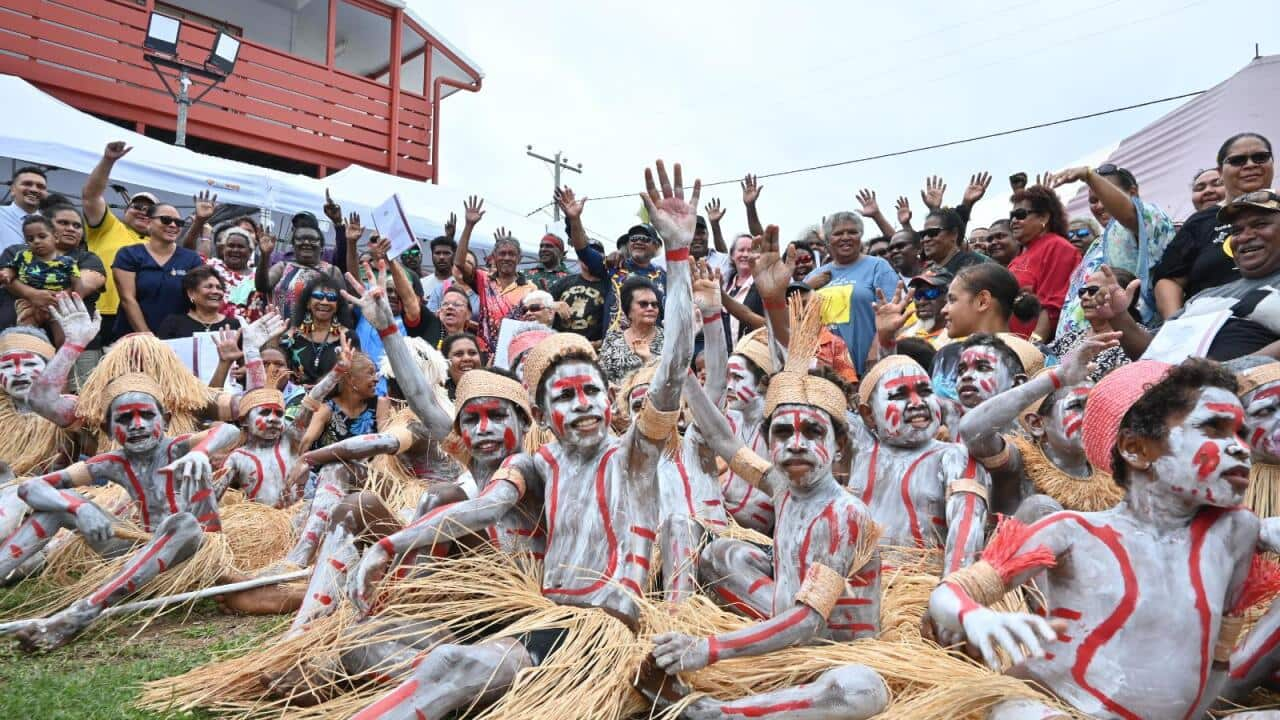key points
- This is the largest ever sea claim in Australia, covering close to 37,800 square kilometres.
- It covers regions where both Aboriginal and Torres Strait Islander communites reside.
- The Chairperson of the Cape York Land Council said the historic occasion came about because of a united voice.
A historic Native Title Consent Determination has been handed down on Waibene (Thursday Island) today.
The determination, which has been 21 years in the making, covers about 65,000 square kilometres of sea and land across the Torres Strait and Cape York region.
The determination is distinctly unique and the first of its kind in Native Title history.
It covers an area where both Aboriginal and Torres Strait Islander communities, cultures and heritage overlap and co-exist.
The applicant groups consist of the Kemer Kemer Meriam and Kulkalgal Nations and Kaurareg, Ankamuthi and Gudang Yadhaykenu people.
Following an agreement between the First Nations groups in 2020 to jointly seek native title recognition, this is the first determination where both Torres Strait Islander and Aboriginal Traditional Owners have worked together to pursue their land and sea justice goals in the Federal Court.
It includes two sea claims that cover close to 37,800 square kilometres, making it the largest sea claim determined in Australia.
Present at the hearing were Traditional Owner groups and claimants, their representatives, and the state of Queensland.
Ned David, Chairperson of Gur A Baradharaw Kod Sea and Land Council (GBK) which is the peak body of all native title prescribed body corporates (PBCs) in the Torres Strait said this determination has been a long time in the making.
“I think it’s been longer than 21 years," he said.
If anything, it started in 1981 when Uncle Koiki [Mabo] actually first took the action to go and challenge the Queensland government around owners to his lands, this is just the next part of that journey.
Justice Mortimer handed down the Consent Determination at the community hearing.
She thanked the applicants for their "treasure trove" of cultural evidence to make the claim possible.
"Thank you for telling your stories … and documenting them. Today shows the strength of your elders and communities."
'One voice' finally heard
Chairperson of the Cape York Land Council, Richie Ah Mat, said the historic occasion is a testament to the strength that comes from speaking with a united voice.
"This is a momentous occasion on so many levels,” he said.
"The decision to unite to give one voice to this land and sea claim has ensured that First Nations people of the Torres Strait and Cape York have finally been heard."

Traditional owner groups and claimants attended the community hearing. Credit: NITV: Talei Elu
According to Gudang Yadhaykenu Traditional Owner and Elder, Shorty Lifu, it is an occasion worth celebrating.
Born in 1943 at Cowal Creek, now known as Injinoo, Shorty said it has also been a long time coming.
"We’ve been waiting for a long time ... generations have been waiting for this. My Dad said, ‘don’t give this place away, it’s our place."
Ugar (Stephens Island) Traditional Owner, Brian Williams, who is part of the Kemer Kemer Meriam Nation, says the Great Barrier Reef is very special to him.

Dancers during the community hearing on Waibene (Thursday Island). Credit: NITV: Talei Elu
"They are my life. My father’s life, my brother's life, my ancestors' life. We have all worked that area,” he said.
“To me, the determination shows the court that this is our waters. We are willing to share with others, but we want everyone to know that our ancestors and us have worked that reef and the sea,” said Mr Williams.
More than 100 islands, islets and cays are now subject to a native title determination, covering almost the entire Torres Strait region, with the native title being managed by 22 Registered Native Title Bodies Corporate.
“On behalf of all Torres Strait Traditional Owners, I acknowledge those Elders, including Torres Strait Islander and Aboriginal Elders from the Kaurareg people, who have championed the cause and I pay respect to those Elders who are no longer with us,” Ned David said.










